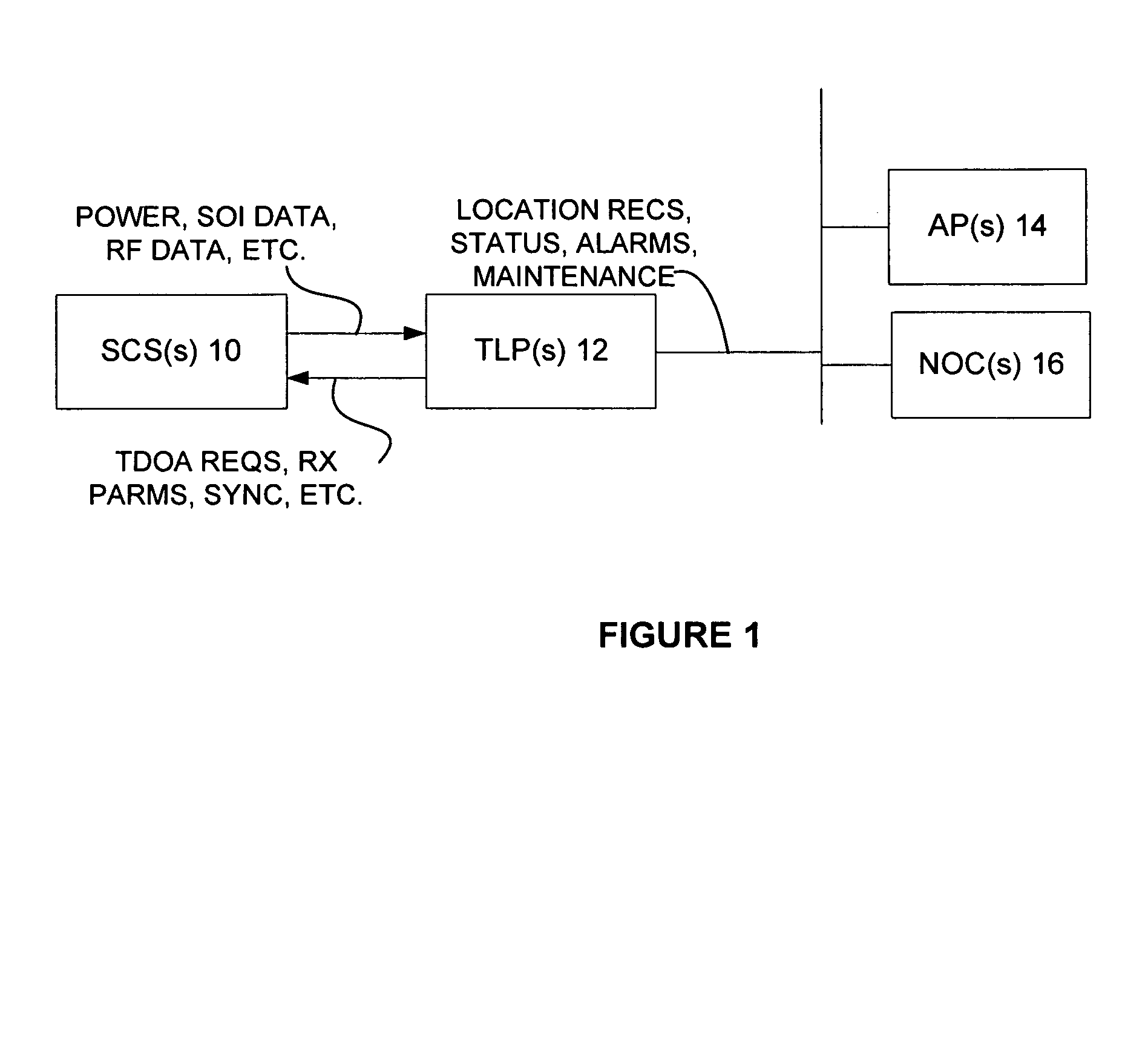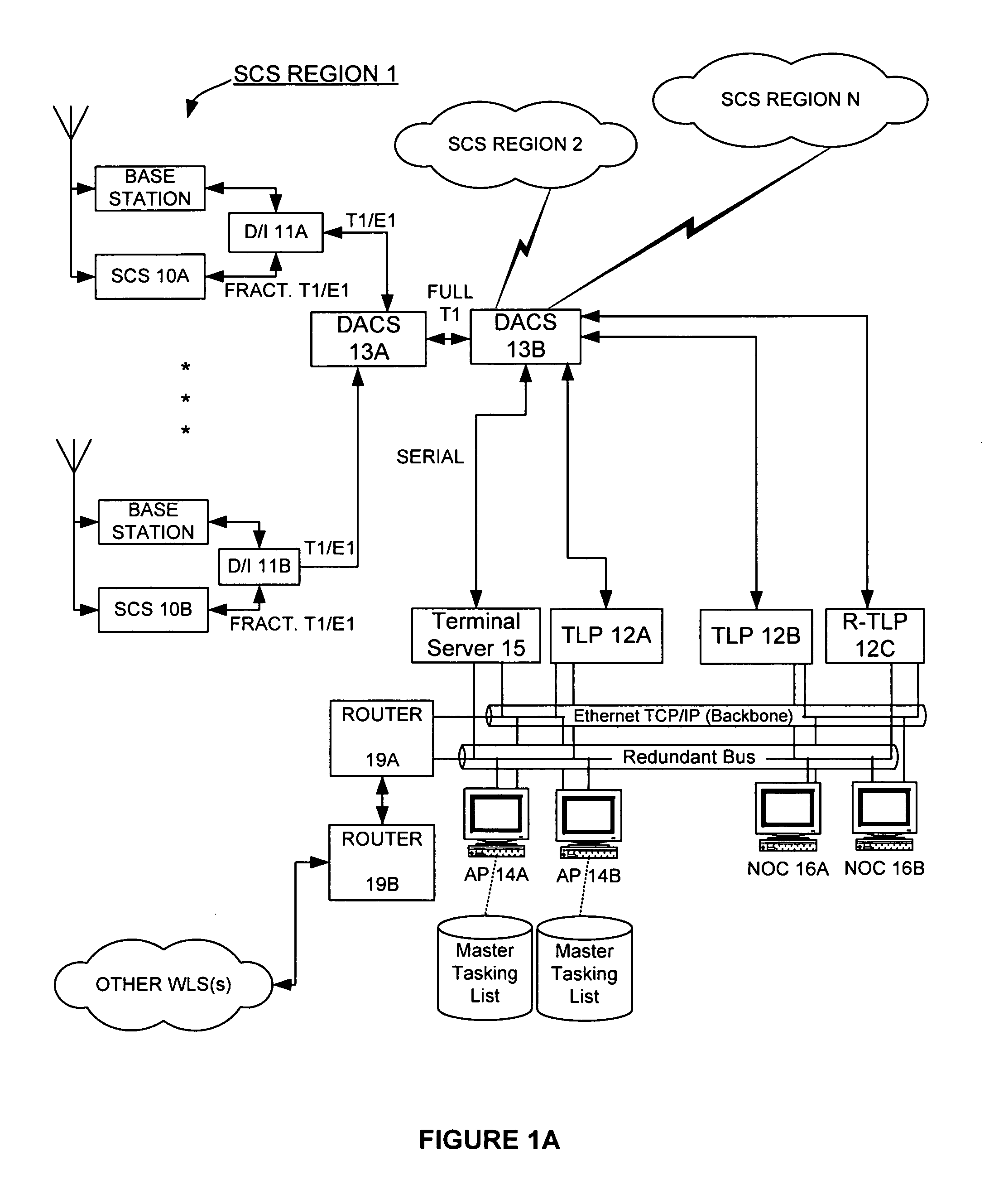Monitoring of call information in a wireless location system
a wireless location and call information technology, applied in the field of wireless transmitter locating methods and apparatuses, can solve the problems of reducing the efficiency of wireless location and reducing the difficulty of wireless location for most approaches to function properly, and saving enormous costs
- Summary
- Abstract
- Description
- Claims
- Application Information
AI Technical Summary
Benefits of technology
Problems solved by technology
Method used
Image
Examples
Embodiment Construction
[0056]A goal of the present invention is to provide a mechanism for non-invasively collecting information concerning cell, frequency, and caller for purposes of directing a wireless location system. For example, the present invention provides a method that may be used in a Wireless Location System of the kind described below to locate GSM mobile phones. With the architecture described below, the system would not be required to detect and demodulate messages from the mobile terminal during call setup. Instead, the WLS could ascertain call setup information from the interface between the BTS and the BSC, which is commonly called the “Abis” interface. From the Abis interface, the location system can identify the calling party (indirectly), the called party (i.e., 911), and the TDMA / FDMA resource being used for a given call at any time.
[0057]The following is a description of an illustrative WLS of the kind in which the present invention may be used. This description is intended to provi...
PUM
 Login to View More
Login to View More Abstract
Description
Claims
Application Information
 Login to View More
Login to View More - R&D
- Intellectual Property
- Life Sciences
- Materials
- Tech Scout
- Unparalleled Data Quality
- Higher Quality Content
- 60% Fewer Hallucinations
Browse by: Latest US Patents, China's latest patents, Technical Efficacy Thesaurus, Application Domain, Technology Topic, Popular Technical Reports.
© 2025 PatSnap. All rights reserved.Legal|Privacy policy|Modern Slavery Act Transparency Statement|Sitemap|About US| Contact US: help@patsnap.com



